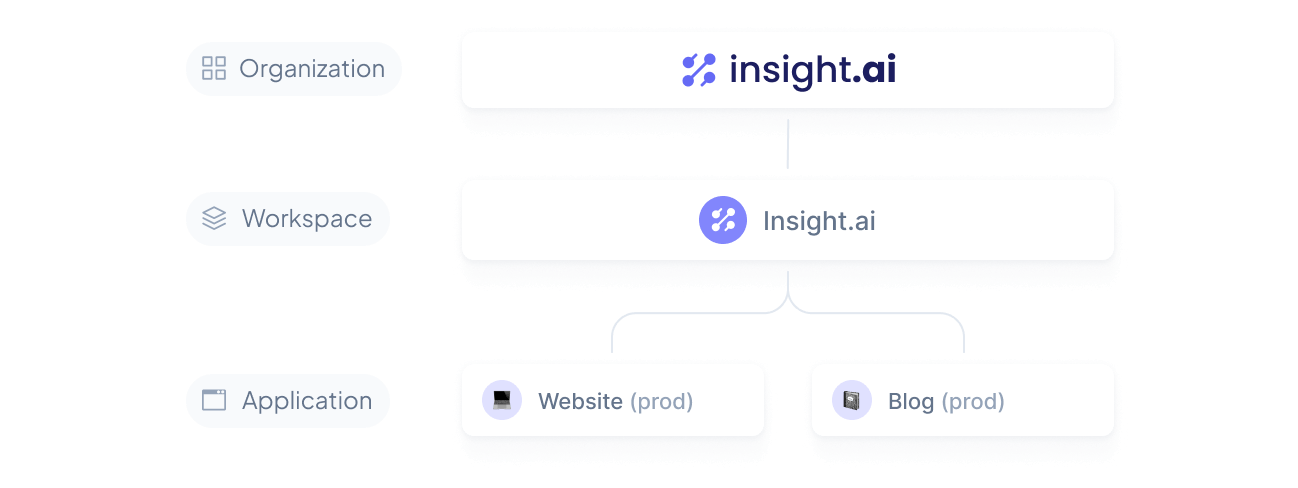Organizational models
Learn the different ways to structure your organization.
Organizations can be modeled in different ways, depending on your business needs.
Whether you are a small startup, a large enterprise, or an individual working on personal projects, the way you structure your organization can significantly influence your data and workflows.
Here we present three different structuring patterns that address different business needs to help you understand and choose the model that best fits your organization.
Single-workspace model
This model is ideal for startups and companies with a single product or service. It brings everything together in one workspace, as illustrated in the following example:

Most companies start with this model as it is simple and can easily expand to the multi-workspace model as the company grows.
When to use this model:
- Your organization has a single product or service.
- There are no plans to expand into different business units.
- You prefer to start simple and evolve as needed.
Multi-workspace model
This model is a good fit for larger organizations with multiple independent products or services. Consider the fictional company StreamCo, which has two distinct products: StreamFlix and StreamSound:

Each product in this model has its own workspace, which allows for separate data and experience management, providing isolation and more granular control over each product or service.
When to use this model:
- Your organization has multiple independent products or services.
- You need granular control over data and experiences for each product.
- You expect to grow and develop additional divisions or products in the future.
- Your organization is part of a group of companies that may benefit from data sharing between workspaces.
Personal model
This model is ideal for individuals working on personal or hobby projects. It is a simplified version of the single-workspace model that brings everything together in one workspace.

In the above example, Paul created a workspace with his name and a workspace called Personal project that includes his blog and portfolio applications. Since he has no need to separate data and experiences, he can take advantage of the simplicity of a single workspace.
When to use this model:
- You are an individual working on personal or hobby projects.
- You do not need to separate data and experiences.
- You want to keep things simple and easy to manage.
Considerations
These models are not mutually exclusive. You can mix and match them to fit your organization's needs and even start with one model and switch to another as your organization grows.
It is worth noting that switching models can have a significant impact on your data and workflows. That is why we recommend that you carefully plan your company's organizational structure, considering both the current and future growth of your business and projects. This will help you avoid unnecessary restructuring in the future.